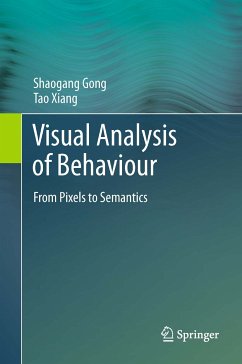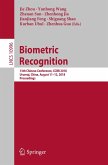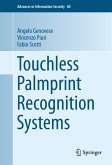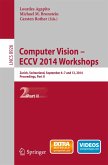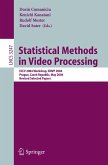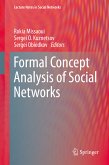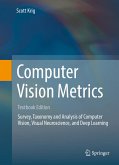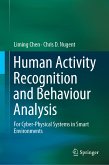This accessible text/reference presents a comprehensive and unified treatment of visual analysis of behaviour from computational-modelling and algorithm-design perspectives. The book provides in-depth discussion on computer vision and statistical machine learning techniques, in addition to reviewing a broad range of behaviour modelling problems. A mathematical background is not required to understand the content, although readers will benefit from modest knowledge of vectors and matrices, eigenvectors and eigenvalues, linear algebra, optimisation, multivariate analysis, probability, statistics and calculus.
Topics and features:
- Provides a thorough introduction to the study and modelling of behaviour, and a concluding epilogue
- Covers learning-group activity models, unsupervised behaviour profiling, hierarchical behaviour discovery, learning behavioural context, modelling rare behaviours, and "man-in-the-loop" active learning of behaviours
- Examines multi-camera behaviour correlation, person re-identification, and "connecting-the-dots" for global abnormal behaviour detection
- Discusses Bayesian information criterion, static Bayesian graph models, "bag-of-words" representation, canonical correlation analysis, dynamic Bayesian networks, Gaussian mixtures, and Gibbs sampling
- Investigates hidden conditional random fields, hidden Markov models, human silhouette shapes, latent Dirichlet allocation, local binary patterns, localitypreserving projection, and Markov processes
- Explores probabilistic graphical models, probabilistic topic models, space-time interest points, spectral clustering, and support vector machines
- Includes a helpful list of acronyms
A valuable resource for both researchers in computer vision and machine learning, and for developers of commercial applications, the book can also serve as a useful reference for postgraduate students of computer science and behavioural science. Furthermore, policymakers and commercial managers will find this an informed guide on intelligent video analytics systems.
Dr. Shaogang Gong is a Professor of Visual Computation in the School of Electronic Engineering and Computer Science at Queen Mary University of London, UK. Dr. Tao Xiang is a Lecturer at the same institution.
Dieser Download kann aus rechtlichen Gründen nur mit Rechnungsadresse in A, B, BG, CY, CZ, D, DK, EW, E, FIN, F, GR, HR, H, IRL, I, LT, L, LR, M, NL, PL, P, R, S, SLO, SK ausgeliefert werden.
"The book aims to describe, analyze, and present the problem of visual analysis of behaviour of objects, with an emphasis on behaviour of people. I have thoroughly enjoyed going through the book and find it a strong contribution to the area of computer vision and automated visual analysis. ... The book is well suited for academics and researchers ... and would be a great resource for implementing any of the algorithms described therein." (Elena Corina Grigore, Perception, Vol. 42, 2013)
"This book presents a comprehensive introduction to algorithms and methodologies for representing, learning, recognizing, interpreting and predicting human behaviour, on the basis of visual data. Examples of human behaviour are given by facial expression, body gesture and human action. The book is mainly intended for readers interested in applications in the fields of visual surveillance, video indexing and search, robotics and healthcare, interaction, animation and computer games." (Patrizio Frosini, Zentralblatt MATH, Vol. 1238, 2012)

